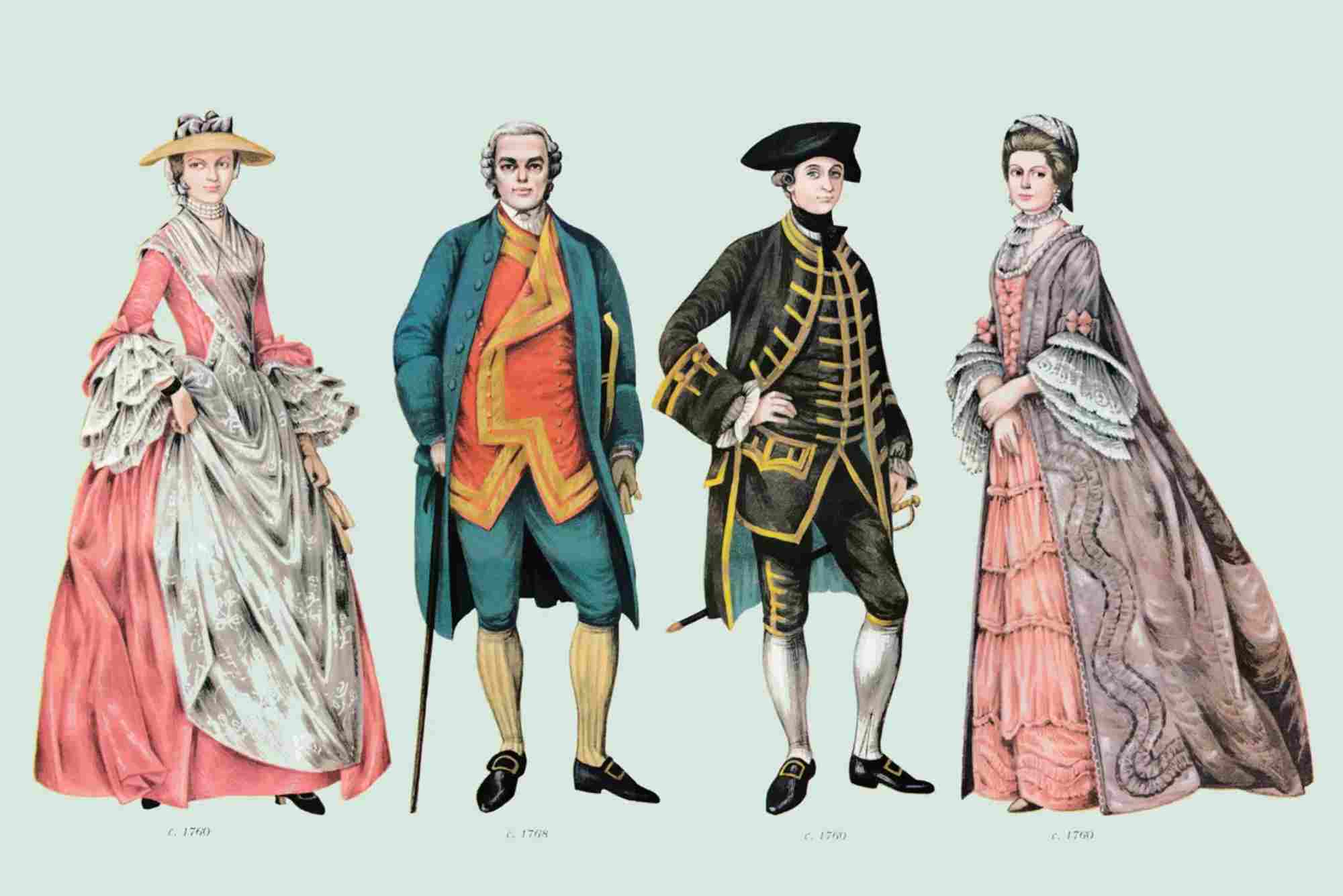A Look Back at 1760s Fashion: Elegance and Empire
The 1760s marked a pivotal era in fashion history, blending the refined elegance of the Rococo period with early signs of changing tastes that would later define the Empire style. This decade was a vibrant reflection of societal shifts, imperial ambitions, and cultural transformations. Exploring 1760s fashion reveals a world where clothing was not only about style but also about status, power, and identity.
In this article, we dive into the key trends and influences that shaped fashion in the 1760s. We’ll explore how clothing reflected the values of elegance and empire, the fabrics and silhouettes that dominated wardrobes, and the fascinating accessories that completed looks. Whether you’re a history buff or a fashion enthusiast, this journey into 18th-century style offers insight into a defining moment in fashion’s evolution.
The Historical Context of 1760s Fashion
Before delving into the specifics of 1760s fashion, it is essential to understand the broader historical backdrop. The decade was a time of political tension and cultural expansion. The British Empire was growing rapidly, influencing styles across continents. At the same time, the French Rococo style, characterized by ornate decoration and soft pastels, was still very much alive, although slowly evolving.
Fashion was deeply intertwined with social class and political identity. Nobility and the upper classes used fashion to assert their status. Meanwhile, the middle class began to adopt more practical and modest versions of these trends, signaling early shifts toward modern fashion sensibilities.
The Signature Silhouettes of 1760s Fashion
Women’s Fashion: The Era of Elegance
The female silhouette of the 1760s emphasized grace and sophistication. Dresses featured wide panniers—structured undergarments that extended the hips horizontally—creating an exaggerated hourglass figure. This shape was crucial in conveying wealth, as it required expensive fabrics and skilled tailoring.
The gowns often included low necklines and elbow-length sleeves finished with lace or ruffles. Soft pastel colors like powder blue, pale pink, and mint green dominated, reflecting the Rococo love for delicate, airy aesthetics.
Men’s Fashion: From Formality to Comfort
Men’s fashion in the 1760s still adhered to the three-piece suit: waistcoat, breeches, and coat. However, there was a gradual move toward more relaxed fits and lighter fabrics, particularly in informal settings. Elaborate embroidery and rich brocades were popular among the aristocracy, often showcasing motifs inspired by nature, such as flowers and vines.
Wigs remained a staple for formal occasions, though powdered styles began to show variation in height and shape, moving away from the towering designs of previous decades.
Fabrics and Colors: Reflecting Taste and Status
Silk was the fabric of choice for the elite, prized for its sheen and smooth texture. Brocade and damask added intricate patterns that elevated a garment’s visual appeal. Lace and ribbons were essential decorative elements, often sourced from renowned centers like Chantilly and Alençon.
The color palette was light and pastel-heavy, with soft yellows, lilacs, and creams featuring prominently. These choices symbolized refinement and delicacy, contrasting with the darker, more somber tones popular in earlier periods.
Accessories and Hairstyles: Completing the Look
Women’s Accessories
Accessories were critical in finishing an elegant outfit. Fans, gloves, and parasols were both practical and decorative. Jewelry—pearls, cameos, and delicate gold pieces—accentuated the refined look without overpowering it.
Hairstyles in the 1760s grew increasingly elaborate. Women favored towering powdered wigs adorned with ribbons, feathers, and sometimes even miniature ships or gardens, reflecting the Rococo’s whimsical spirit. The “pouf” hairstyle became a symbol of high fashion, requiring daily maintenance and professional styling.
Men’s Accessories
Men accessorized with tricorne hats, pocket watches, and canes. Stockings and buckled shoes completed their formal attire. The careful coordination of these items reflected a gentleman’s taste and social standing.
The Influence of Empire on 1760s Fashion
The expansion of European empires affected fashion in subtle but significant ways. Exotic fabrics, motifs, and styles found their way into European wardrobes. For example, the fascination with Chinoiserie—Chinese-inspired designs—became widespread, influencing patterns and embroidery.
Moreover, military uniforms, reflecting imperial conquests and global presence, inspired civilian fashion with structured coats and brass buttons, hinting at the coming shifts toward neoclassicism and the Empire style of the early 19th century.
1760s Fashion in Everyday Life and Popular Culture
Fashion was not limited to aristocrats. Wealthy merchants and professionals adopted elements of elite fashion, adapting them for practicality and modesty. This democratization of style laid the groundwork for future fashion trends.
Theaters and art of the period also mirrored 1760s fashion. Portraits, plays, and operas showcased contemporary clothing, serving both as entertainment and as a record of evolving styles.
Why 1760s Fashion Matters Today
The 1760s represent a fascinating crossroads in fashion history—where ornate elegance met the stirrings of empire and modernization. This era’s styles offer rich insight into social hierarchies, cultural values, and the global influences shaping Europe at the time.
For modern fashion lovers and historians alike, studying 1760s fashion is a window into how clothing can symbolize power, identity, and change. Whether you appreciate the delicate beauty of Rococo gowns or the emerging practicality in men’s wear, this decade’s fashion remains inspiring.
If you enjoyed this journey into the 1760s fashion, explore more about how history influences modern style and don’t hesitate to share your thoughts or questions below!
Frequently Asked Questions (FAQs)
What defined women’s fashion in the 1760s?
Women’s fashion in the 1760s was marked by wide panniers creating an exaggerated hourglass silhouette, low necklines, and pastel colors influenced by Rococo elegance.
How did men dress in the 1760s?
Men typically wore a three-piece suit with waistcoat, breeches, and coat, often richly embroidered, paired with powdered wigs and tricorne hats for formal occasions.
What fabrics were popular in 1760s fashion?
Silk, brocade, and damask were the most popular fabrics, often decorated with lace and ribbons to convey status and refinement.
Did empire influence 1760s fashion?
Yes, imperial expansion introduced exotic motifs like Chinoiserie and military-inspired details, paving the way for the Empire style in later decades.
How were hairstyles styled in the 1760s?
Women favored tall powdered wigs adorned with ribbons, feathers, and elaborate decorations, while men wore powdered wigs styled in varied shapes.




